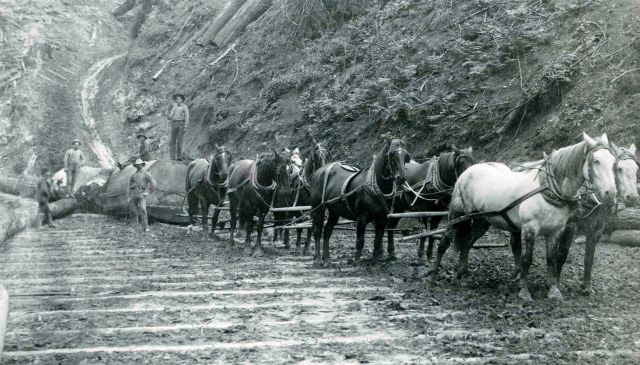I won’t dwell on the current COVID-19 pandemic – this is not the platform – but while reading some of the daily updates on-line, an aspect of a much earlier pandemic piqued my interest.
Typhus, yellow fever and cholera epidemics have been sweeping the world since the nineteenth-century. During the ‘third’ and ‘fourth’ cholera pandemics (1846 – 1895), Irish famine survivors along with other English and European emigrants introduced cholera to North America. Thousands died in New York alone, due in part to ignorance of how the disease was spread and contracted. It’s estimated over 50,000 Americans died as a result of the outbreaks. Quack cures and remedies abounded (figures 1 & 2).
 Fig. 1. Unhelpful advice.
Fig. 1. Unhelpful advice.
 Fig. 2. Laughable remedies. (New York Times)
Fig. 2. Laughable remedies. (New York Times)
Droves of people fled disease hotspots to socially distance themselves in remote areas in hopes of avoiding the grips of the epidemics. I myself have been practising physical distancing for decades, though I live in comfortable surroundings with full amenities – unlike many of the wretched nineteenth-century evacuees.
The vast forests of North America and Canada were favourite destinations for thousands of families and individuals seeking seclusion. Many began their isolation beneath canvas until more permanent accommodation could be constructed. The problem with living in the wilderness for most of the evacuees was they had few tools and lacked the skills to use them. Natheless, with their enterprising frontier spirit, they soon began hewing homes out of the most abundant commodity – trees.
The old growth trees were enormous with girths so large, they could – when hollowed out – accommodate a sizeable family. The greatest drawback was, of course, how to erect a roof hundreds of feet above the forest floor.
The solution was simple: Cut off the unwanted part of the tree (figures 3 & 4).
 Fig. 3. Three brothers beginning the removal of the top of their new home.
Fig. 3. Three brothers beginning the removal of the top of their new home.
 Fig. 4. A team of ‘stump men’ after the successful ‘topping’ of a large tree.
Fig. 4. A team of ‘stump men’ after the successful ‘topping’ of a large tree.
Once reduced in height, the stump could be hollowed out and a shingle roof constructed over the top (figures 5, 6, 7, 8, 9 & 10).
 Fig. 5. A group of men fitting out the interior of a stump.
Fig. 5. A group of men fitting out the interior of a stump.
 Fig. 6. ‘Home sweet home’.
Fig. 6. ‘Home sweet home’.
 Fig. 7. A stump house with an extension.
Fig. 7. A stump house with an extension.
 Fig. 8. Still a bit of work to do in the garden.
Fig. 8. Still a bit of work to do in the garden.
 Fig. 9. This stump house has a stove inside…
Fig. 9. This stump house has a stove inside…
 Fig. 10. … and this one has a stable at the rear.
Fig. 10. … and this one has a stable at the rear.
It soon became apparent to this new breed of stump-dwellers that their endeavours produced an awful lot of waste which littered their immediate environment. Much of the waste was quite sizeable too and required significant horsepower to remove (figures 11, 12, 13 & 14).
 Fig. 11. It must have been for a very large family.
Fig. 11. It must have been for a very large family.
 Fig. 12. The waste from stump houses built on hillsides could be rolled away…
Fig. 12. The waste from stump houses built on hillsides could be rolled away…
 Fig. 13. … others had to haul their waste away.
Fig. 13. … others had to haul their waste away.
 Fig. 14. Another load of waste being disposed of.
Fig. 14. Another load of waste being disposed of.
Much of the smaller waste was piled in heaps and burned. (figure 15).
 Fig. 15. Building a big bonfire.
Fig. 15. Building a big bonfire.
Those in close proximity to rivers simply dumped their waste in the watercourse only to cause impossible headaches for those downstream (figure 16).
 Fig. 16. Fishermen with their poles looking for gaps to drop their hooks in.
Fig. 16. Fishermen with their poles looking for gaps to drop their hooks in.
When navigating the great rivers became hampered, dumping tree waste was made illegal, though enforcement was virtually impossible. Once the virulence of the epidemics had subsided, teams of ‘lumberjacks’ (figure 17) were established to move in and clear away obstructions.
 Fig. 17. The first team of lumberjacks to be implemented in British Columbia.
Fig. 17. The first team of lumberjacks to be implemented in British Columbia.
Though they’ve largely lost their way, the tradition of lumberjacks is still celebrated to this day (figure 18).
 Fig. 18. A troupe of lumberjacks.
Fig. 18. A troupe of lumberjacks.
Jack Plane

Thank you for this post! Your posts are a welcomed read. Hope all is well with you and family. and remember one important thing…wash and stay away from people!
LikeLike
Sadly, we don’t have enough of those big trees left to resolve our present dilemma. But then I remember, it’s already April 1st down under. Thanks for the pleasure of your reminder and top of the day to you as well.
LikeLiked by 1 person
On the west coast of the US so called lumberjacks always went by the moniker of logger. “Waste” was referred to as slash, as in burning slash piles— often in wigwam burners at lumber mills.
LikeLike
…appreciate your sense of humour!
LikeLike
A very humorous post.i really like the last three photos. The log drivers with pikes, and the RCMP pictures. I live in Fort Nelson, British Columbia and my youngest son is an RCMP on Vancouver Island.
Take care and be safe
LikeLiked by 2 people
Let me guess. Australia is a day ahead of us? That was indeed an interesting way of social distancing.
LikeLike
Those that would waste those huge conifers to make a stump house should have been shot.
Think of the incredible waste that they generated. The tree that Figure 11 came from must have been unbelievably enormous.
Always interesting reading from you jack. Thanks.
LikeLike
I’m a lumberjack and I’m OK, I sleep all night and I work all day
LikeLiked by 1 person
He’s a lumberjack and He’s OK he sleeps all night and he works all day!
LikeLike
Good one! Merry April 1st,
by the way, I get tremendous joy and knowledge from your postings.
Henrik
LikeLike
1st of April nice way to rewrite history from real pictures. No fake news as this is not about news.
LikeLike
Unreal. We moderns have little concept of the world that was.
LikeLiked by 1 person